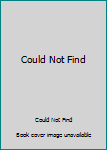DRA2 The Blasters (A Benchmark Assessment Book, BP Level 30)
Select Format
Select Condition 
Book Overview
No Synopsis Available.
Format:Paperback
Language:English
ISBN:0596805020
ISBN13:9780596805029
Release Date:June 2010
Publisher:O'Reilly Media
Length:552 Pages
Weight:1.78 lbs.
Dimensions:1.1" x 7.5" x 9.2"
Customer Reviews
5 customer ratings | 5 reviews
There are currently no reviews. Be the first to review this work.



















